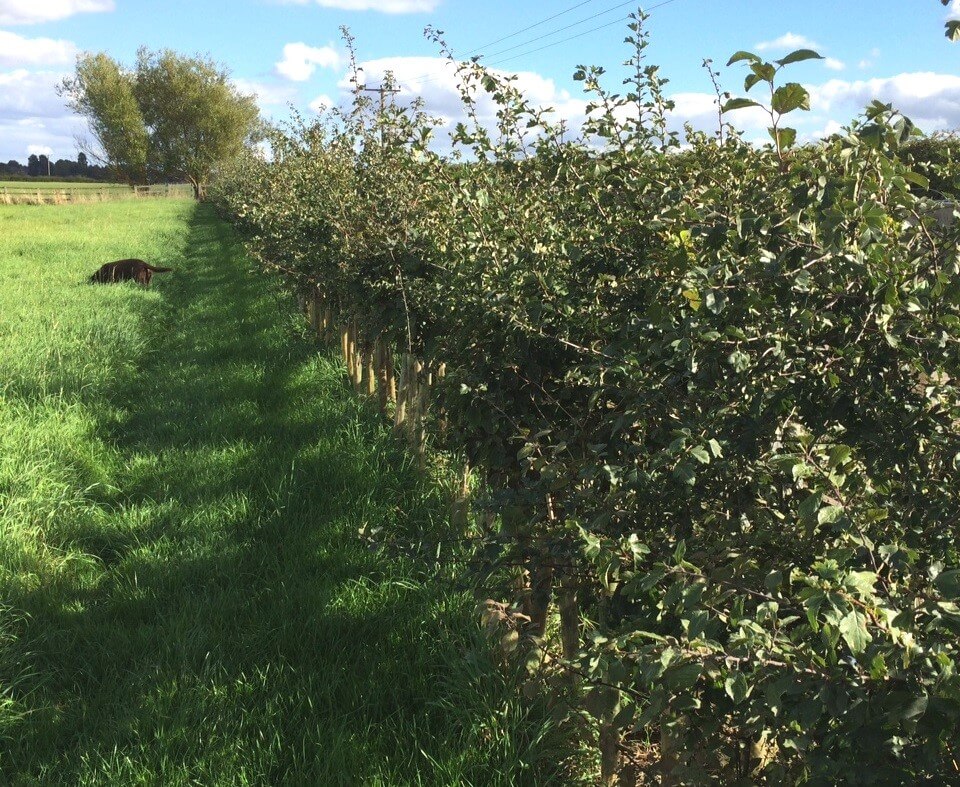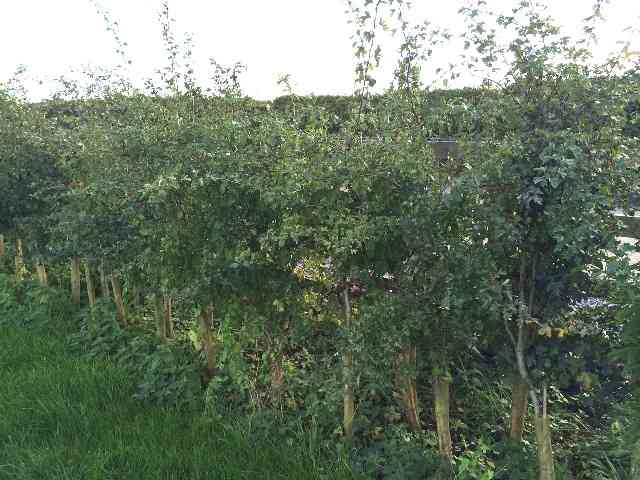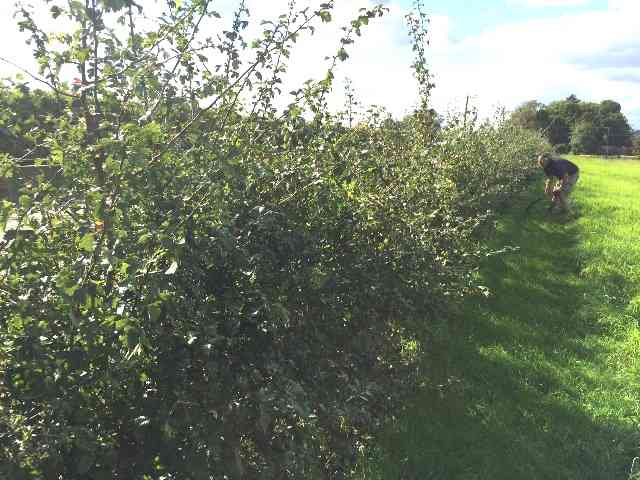£5.61 – £6.71 Excl. VAT
Our BN11 hedging mix is tailored to meet the requirements of the Countryside Stewardship government initiative (BN11: planting new hedges and BN7: hedgerow gapping-up).
Sold by the meter (6 plants), this product aims to simplify the procurement process for you and ensure that the hedging which is planted complies with the specification set out by the Rural Payments Agency and Natural England.
Description
Our Stewardship BN11 Hedging Mix is a carefully crafted blend focusing on Hawthorn (Crataegus monogyna) and complemented by a diverse selection of native species. This attractive mix ensures biodiversity and creates a functional and visually appealing hedge for your space. Additional species in this hedging mix may include, but are not limited to:
- Corylus Avellana (Hazel)
- Prunus Spinosa (Blackthorn)
- Acer Campestre (Field Maple)
- Malus Sylvestris (Crab Apple)
- Euonymus Europaeus (Spindle)
- Fagus Sylvatica (Beech)
- Cornus Sanguinea (Dogwood)
- Rosa Canina (Dog rose)
- Viburnum Lantana (Wayfaring tree)
- Viburnum Opulus (Guelder Rose)
- Ligustrum Vulgare (Wild Privet)
We will supply 6 native hedge plants per meter, and each transplant will be two years old and measure at least 450-600mm in height (there is a 600-800mm option if you wish). Our Stewardship Hedging Mix offers great versatility. While the mix typically leans towards Hawthorn, please note that we reserve the right to adjust proportions and species at our discretion.
What are the Benefits of using BN11 Hedging Mix?
The BN11 Hedging Mix promotes biodiversity, addresses soil erosion and runoff, supports wildlife with food and habitats, enhances pollination, lowers flood risk, and captures and stores carbon. None of the plants are toxic to livestock. This native farm hedging mix is an excellent choice for farmers and landowners with paddocks, fields, and/or gardens. Elevate your landscape with a blend that not only champions environmental stewardship but also transforms your surroundings into a thriving and vibrant habitat.
Find out about the benefits of using native hedging.
Additionally, we also supply spiral rabbit guards and canes for protecting newly planted hedgerows.
Additional information
| Height | 40/60cm, 60/80cm |
|---|
Delivery
Delivery is charged at a flat rate of £35 + VAT. This can be varied without notice at our discretion.
Delivery is to mainland UK only.
We aim to deliver within 2-3 weeks of an order being placed.
Deliveries will be off-loaded at the roadside. If the customer orders the delivery vehicle off the public highway this will be at the discretion of the driver and entirely at the customers’ risk.
We will use all reasonable efforts to fulfil any delivery dates but time is not of the essence and timeframes are estimates only.
Please also refer to our terms and conditions page.
About the Plants

Acer Campestre
Field Maple
Acer Campestre, a small deciduous tree, reaches a height of around 10m when left untrimmed. Despite its shoots possessing some brittleness and toughness, the tree responds exceptionally well to trimming, making it an excellent choice for hedgerows. Furthermore, it exhibits tolerance for a wide variety of soil types and conditions. The lobed leaves display a dull green colour that transforms into a beautiful shade of yellow in the Autumn. In early April, the tree blooms with flowers, followed by winged seeds known as ‘Keys.’

Cornus Sanguinea
Dogwood
Cornus Sanguinea, a dense hedgerow shrub predominantly located in the south of England, features striking purplish twigs that bear dull, dark green leaves. In the Autumn, it produces fairly insignificant white flowers, succeeded by very dark, almost black, berries. Notably, this shrub is a vigorous grower, and its young shoots present a particularly striking appearance in the Winter.
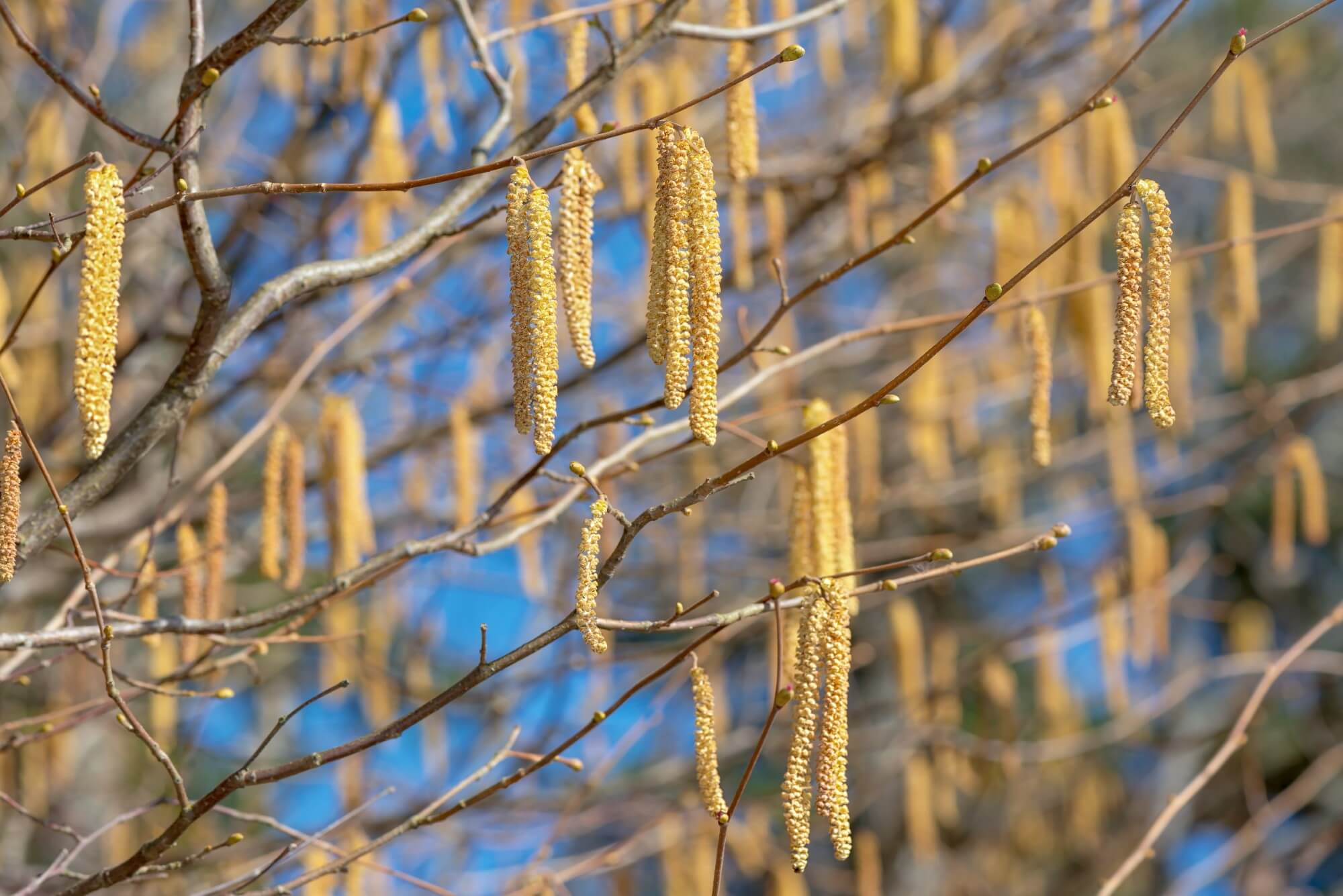
Corlyus Avellana
Hazel
Corylus Avellana is an outstanding hedgerow plant with a strong and vigorous habit. When left untrimmed, it develops into a bushy, small tree reaching about 5m in height. Its oval to round leaves are slightly pointed and heart-shaped at the stem. Additionally, the coppery bark tends to peel, providing the tree with an appealing appearance when devoid of its leaves. In April, before the leaves unfurl, Corylus Avellana blooms, starting with the male catkins in groups of four, followed by the female flowers. Notably, Corylus is most renowned for producing round, edible, hard-shelled hazelnuts, which contribute beauty and benefits to both humans and animals.

Crataegus Monogyna
Hawthorn
Crataegus Monogyna stands out as the most useful native hedging plant. This thorny, fast-growing shrub or small tree can reach about 5m if left unchecked. It proves to be an incredibly tough plant, tolerating a wide variety of soil types and conditions. Its thorny branches and shoots provide useful stock-proof credentials, and wildlife values both the prolifically produced flowers and berries. Additionally, it is a particularly attractive tree, developing a gnarled appearance with age and offering plenty of seasonal interest.
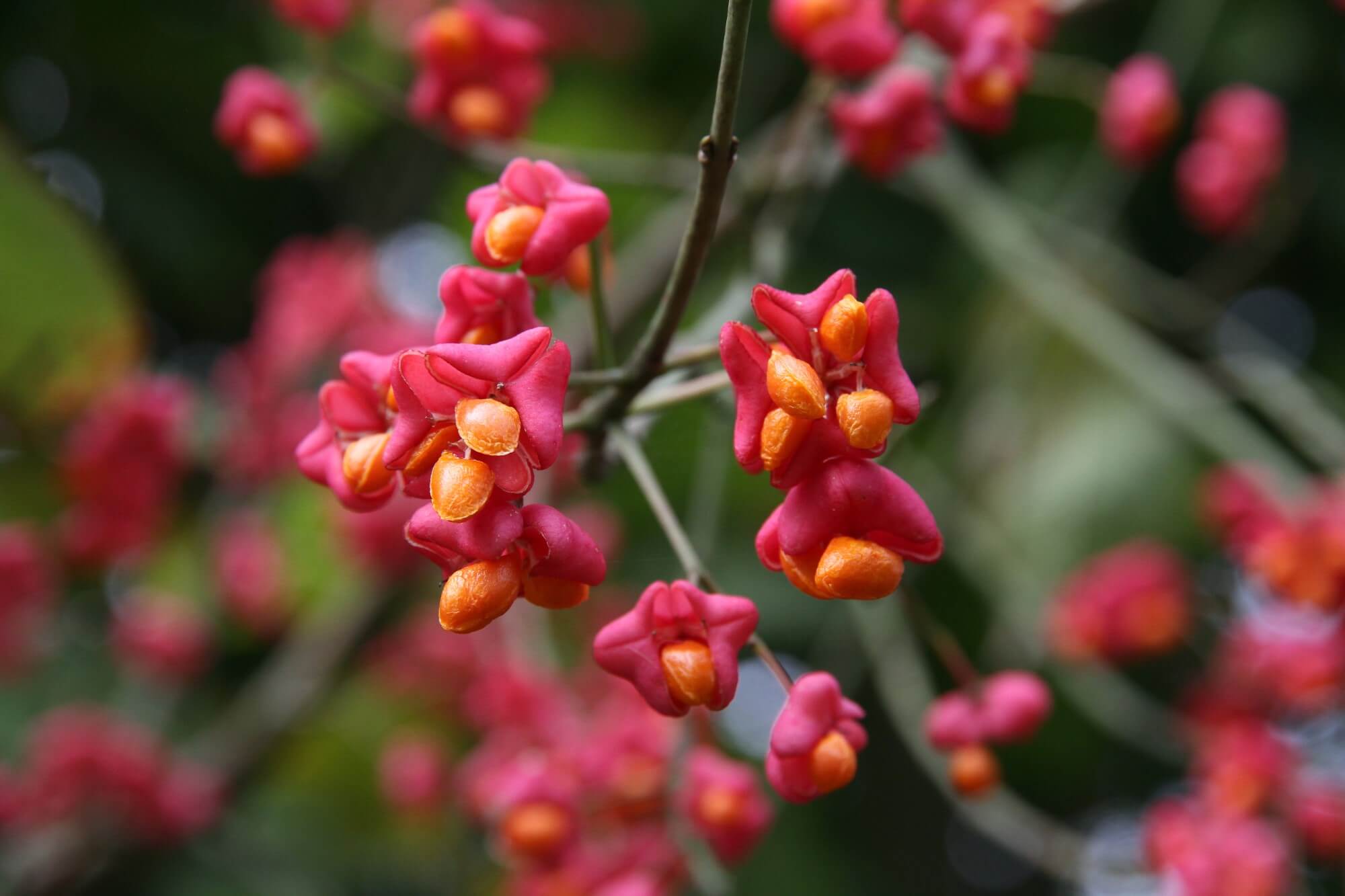
Euonymus Europaeus
Spindle
Euonymus Europaeus commonly exists as a small, bushy shrub, but it can grow into a small tree up to 5m or so if left unchecked. This plant boasts an attractive appearance with greyish-green bark and corky ridges running up the stems. In the Autumn, Euonymus Europaeus presents an impressive display with pink seed cases and stunning leaf colour.
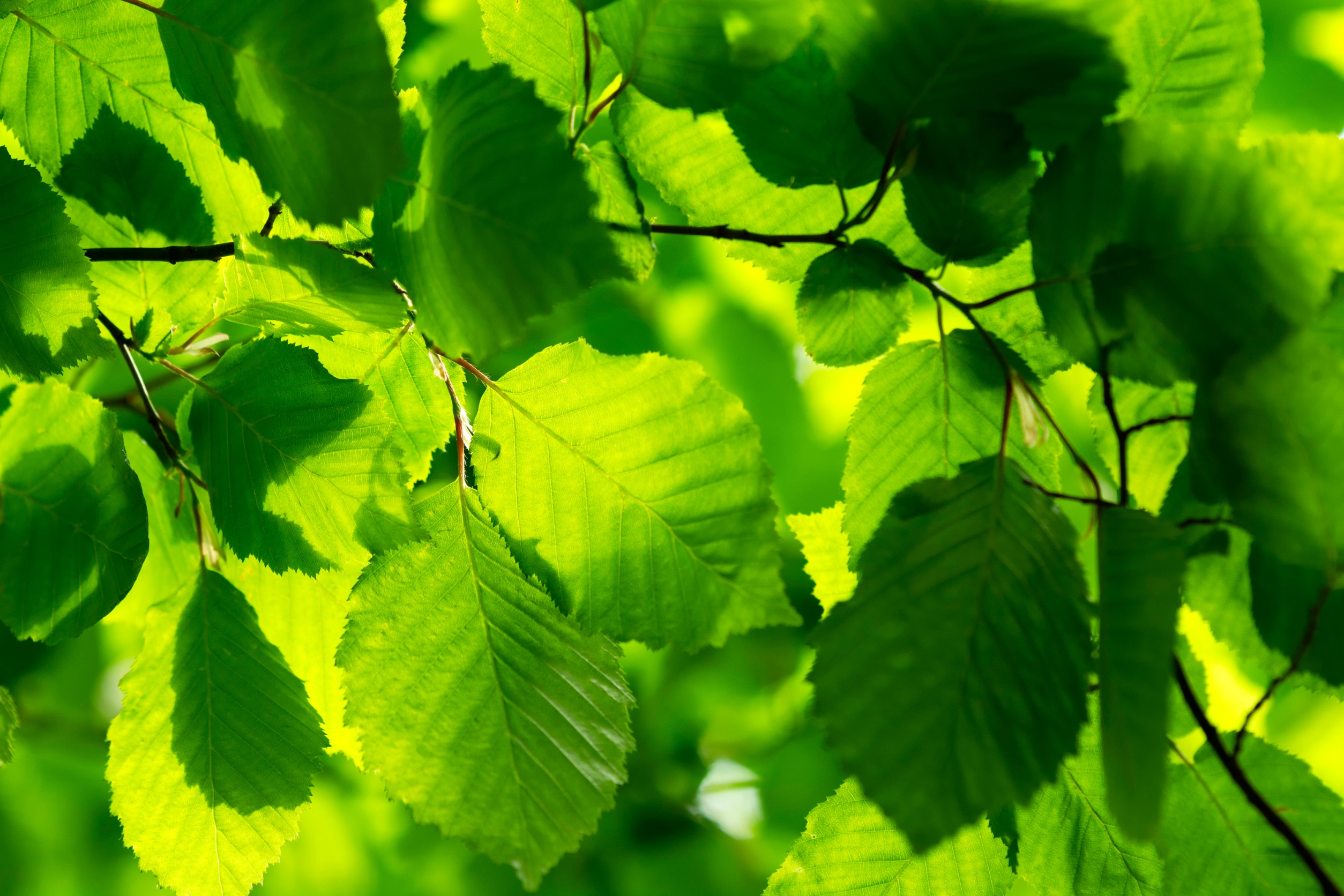
Fagus Sylvatica
Common Beech
Fagus Sylvatica is a well-liked hedging plant that responds very well to trimming, resulting in dense growth. However, if left unchecked, it will develop into a towering tree. This plant does not tolerate wet soil but shows a particular affinity for chalky upland sites. It can endure very harsh and windy conditions. The leaves are broad and smooth, ovate in shape, with slightly wavy edges. In late Spring and early Summer, Fagus Sylvatica produces small green flowers, followed in the Autumn by ‘Beechmast,’ the tree’s fruit enclosed in a rough case containing two triangular nuts. The Autumn and Winter leaf colour of Fagus is especially noteworthy, presenting a rich shade of coppery-brown.

Ligustrum vulgare
Wild Privet
Ligustrum Vulgare is a semi-evergreen shrub (largely depending on conditions) that reaches around 5m if left unchecked. It features longish oval, smooth green leaves with pointed tips. If trimmed, it responds by producing dense, bushy growth, and it tolerates very windy and harsh sites, although it is more likely to be deciduous in such a location.
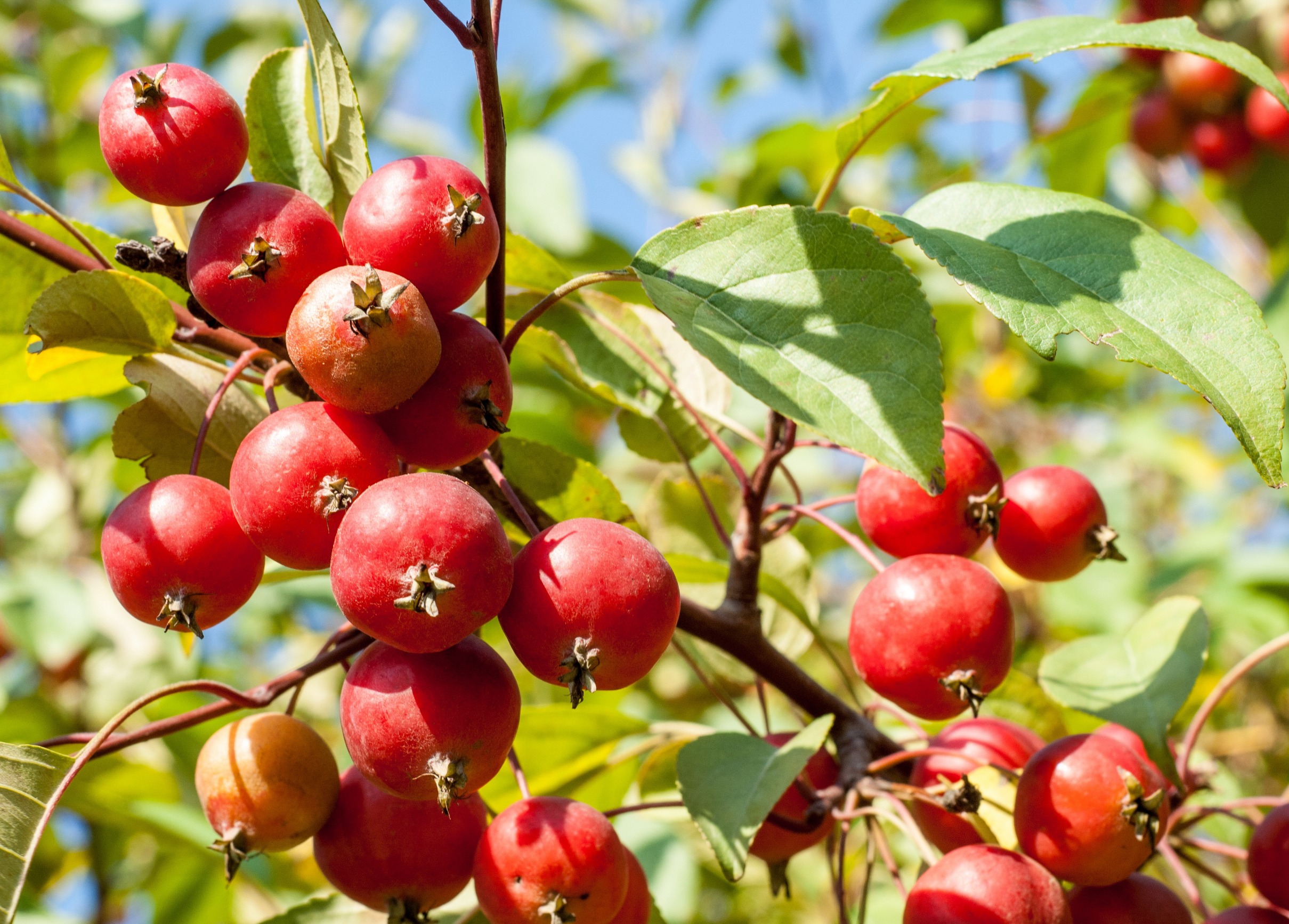
Malus Sylvestris
Crab apple
Malus Sylvestris is a useful native plant generally encountered as a dense small tree. Semi-thorny twigs bear its small oval leaves. In early May, it produces masses of white to pale pink flowers, later followed by small fruits (Crab apples or simply Crab), which wildlife immensely favors.
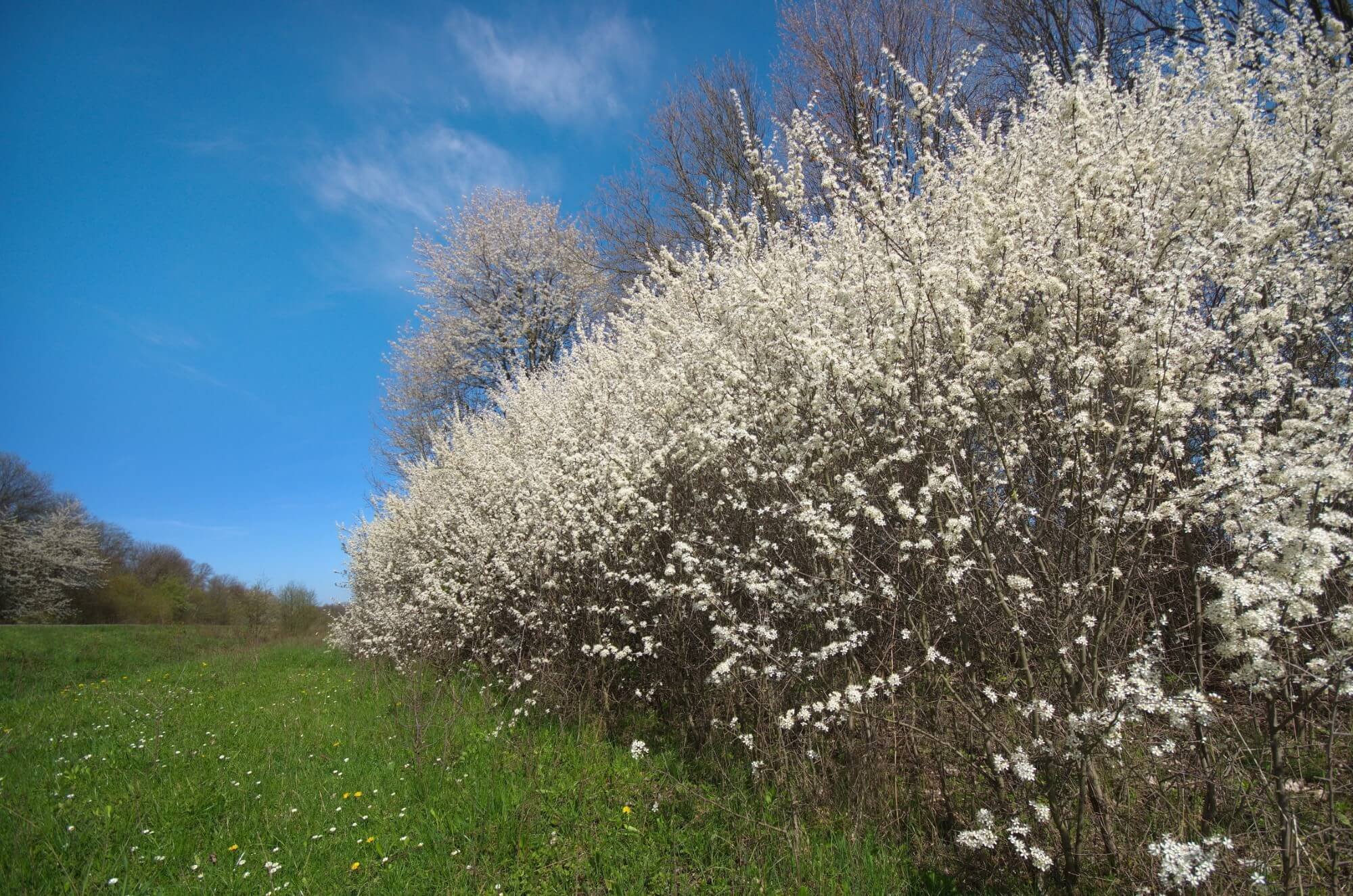
Prunus Spinosa
Blackthorn
Prunus Spinosa is another very common and popular hedging plant. It is valued for its bushy, vigorous, thorny growth, and abundant black berries known as ‘Sloes.’ Additionally, it tends to produce suckers. If left unchecked, it can become a thicket. However, this is not typically an issue in hedges that are trimmed every one or two years. The Sloes are particularly renowned for the popular gin-based liqueur. Of course, they provide a significant benefit to wildlife as well.
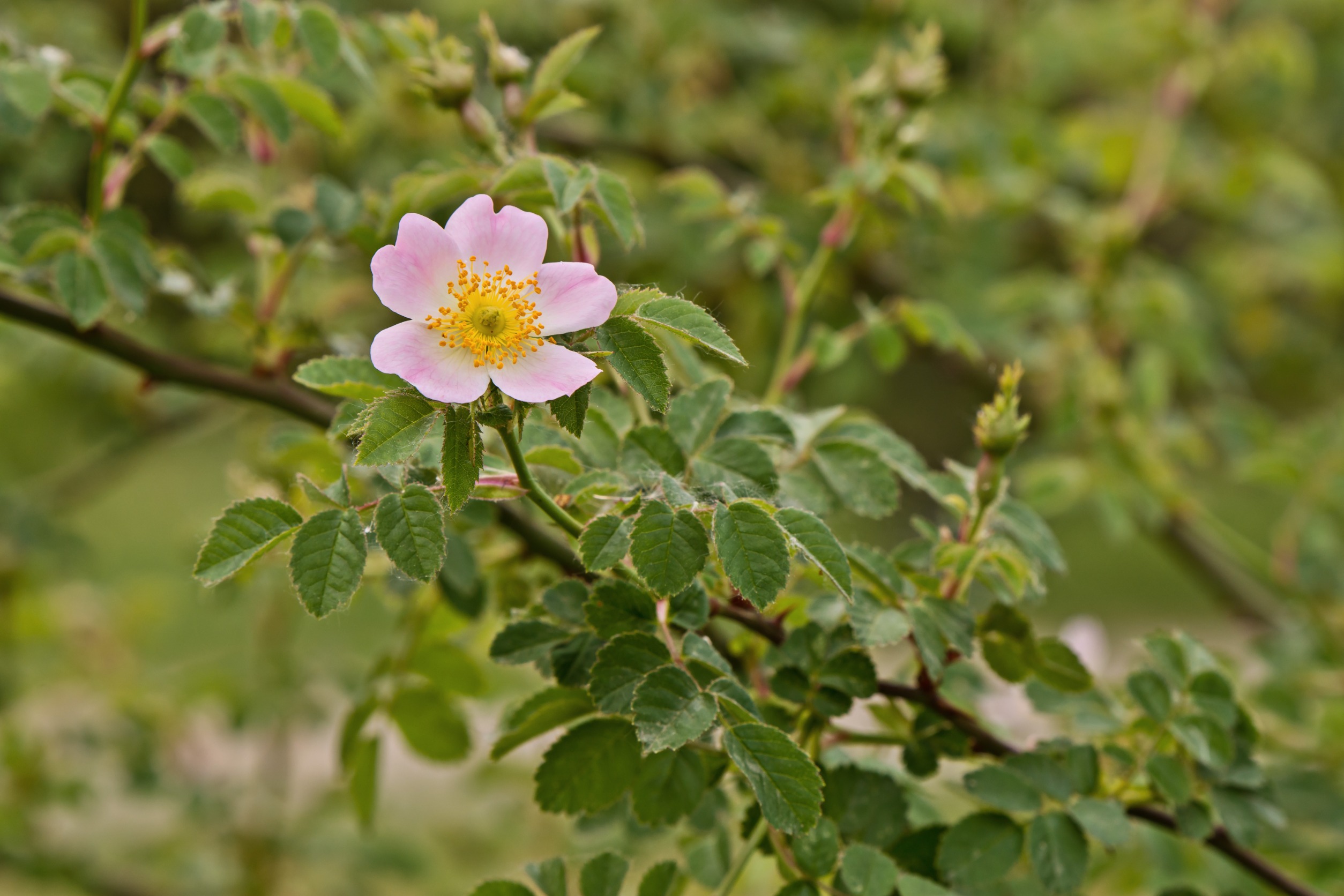
Rosa Canina
Dog Rose
Rosa Canina is an arching, long-branched, vigorous little shrub with spiky stems. The leaves have dull greyish-green colouring with toothed margins, and the flowers range from pink to white. Bright red fruits known as ‘hips’ appear in the autumn, which wild birds find very appealing.
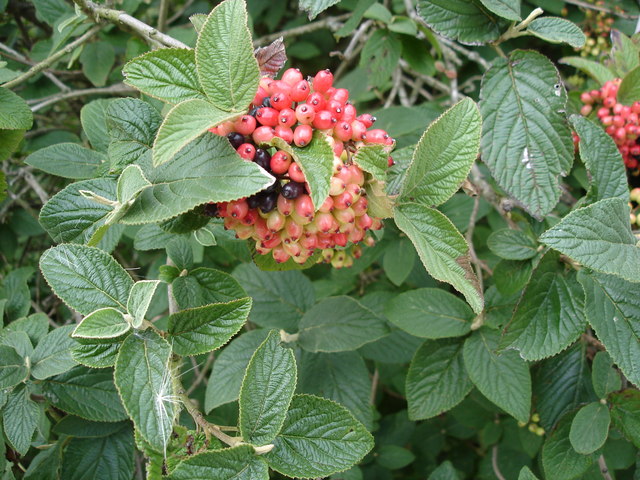
Viburnum Lantana
Wayfaring Tree
Viburnum Lantana is a bushy, deciduous shrub most commonly found on the chalklands of southern England. With distinctive downy stems and large oval leaves that have a downy underside, Viburnum lantana stands out in its appearance. In May, it bears broad clusters of white flowers, followed by shiny red berries in the autumn, which turn almost black by winter. Notably, it is a medium growth plant, and its ease of maintenance and value to wildlife make it particularly useful in a native hedge.
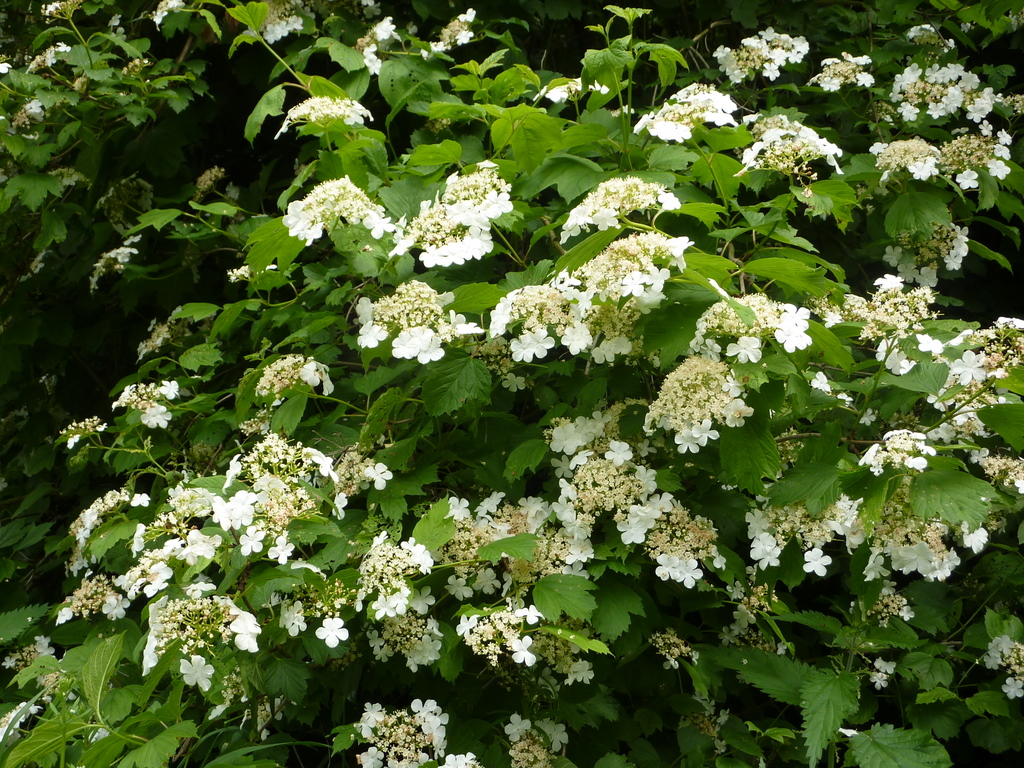
Viburnum Opulus
Guelder Rose
Viburnum Opulus is a slower-growing shrub with green, maple-like leaves. Furthermore, it features striking white flowers in early summer, which are followed by blood-red berries in the autumn. Around this time, the leaves also turn a pleasing shade of red before falling, revealing the thin, grey twigs and bark.



